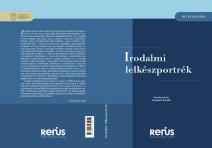The Blessed Captive of Christ: Reflections on Sándor Szilágyi’s My Blessed Captivity
Synopsis
Sándor Szilágyi (1912–1977) was a Reformed pastor who graduated from the theological institute in Cluj. In 1958, he was arrested in connection with the Bethánia movement and sentenced to 20 years in prison; he was released in 1964. After his release, he wrote down his story under the title Boldog rabságom [My Blessed Captivity], which spread in samizdat form and was eventually published in the West—the Romanian secret police, the Securitate, also tried to suppress the text. In the revised 1999 edition, András Visky described the work as “the chronicle of a great love”: the story of growing sacred love for Jesus. Sándor Szilágyi recorded the chronicle of captivity with humble faith in God and not with a documentary intent.
In the prison, spiritual unity became substantial: he experienced the fellowship of prayer and of the Scripture together with Protestant, Orthodox, and Catholic brethren. The book also presents stories of conversions: a Romanian inmate, a former colonel, and a young prisoner all found their way to Jesus through Szilágyi’s mediating service. In a humane, natural style, he writes honestly about physical suffering, temptations, and small joys—such as a family photo or a leaf glimpsed through the cell window. In addition to Sándor Szilágyi (1912–1977) was a Reformed pastor who graduated from the theological institute in Cluj. In 1958, he was arrested in connection with the Bethánia movement and sentenced to 20 years in prison; he was released in 1964. After his release, he wrote down his story under the title Boldog rabságom [My Blessed Captivity], which spread in samizdat form and was eventually published in the West—the Romanian secret police, the Securitate, also tried to suppress the text. In the revised 1999 edition, András Visky described the work as “the chronicle of a great love”: the story of growing sacred love for Jesus. Sándor Szilágyi recorded the chronicle of captivity with
humble faith in God and not with a documentary intent.
In the prison, spiritual unity became substantial: he experienced the fellowship of prayer and of the Scripture together with Protestant, Orthodox, and Catholic brethren. The book also presents stories of conversions: a Romanian inmate, a former colonel, and a young prisoner all found their way to Jesus through Szilágyi’s mediating service. In a humane, natural style, he writes honestly about physical suffering, temptations, and small joys—such as a family photo or a leaf glimpsed through the cell window. In addition to the strength of the prison community, the example of Ferenc Visky, his fellow believer and cellmate, was particularly significant.
Szilágyi never abandoned his guards or fellow inmates during times of trial: stories bear witness to how he served with prayer and love, toward everyone.
The central lesson: one must not only obey earthly power but also bear responsibility in its presence. The core message of the book is that freedom is not necessarily physical—Szilágyi, with a “free heart,” was freer than his fellow prisoners, having voluntarily accepted his fate. His closing thought is especially strengthening: “The more miserable I was, the more I longed to show Christ...






